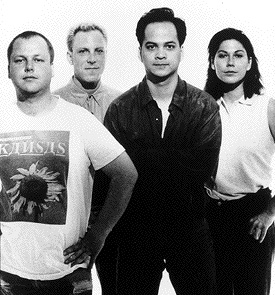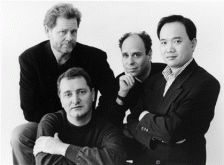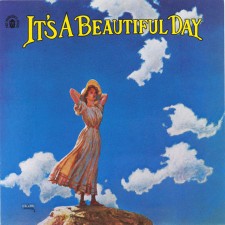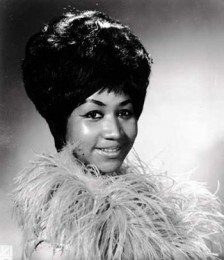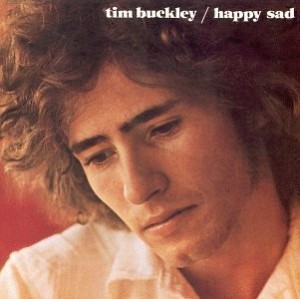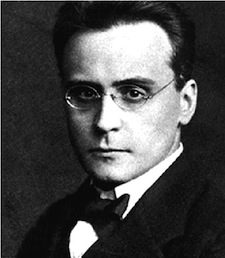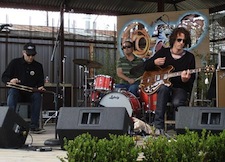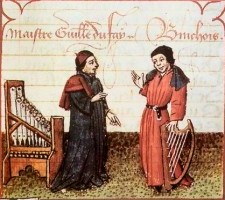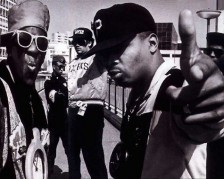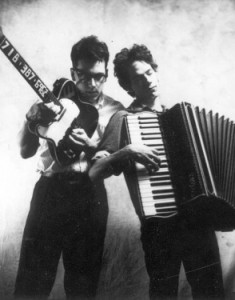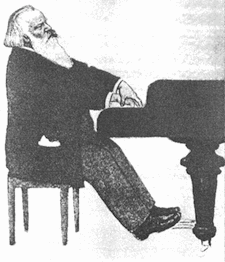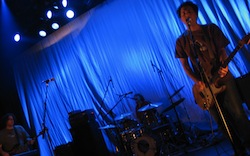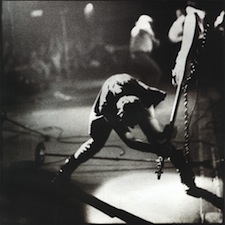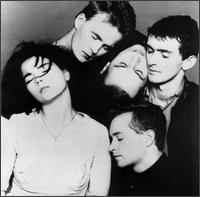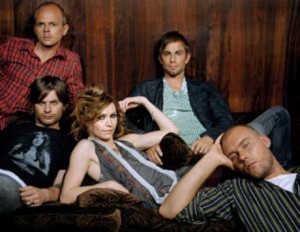Archive for the ‘Rock / Pop’ Category
Day 103. The Pixies, Nico and John Coltrane.
Sunday, June 6th, 2010Day 101. It’s A Beautiful Day, Beethoven.
Tuesday, June 1st, 2010I spent most of last night working on a recording while ripping the Alexander String Quartet recordings of the complete Beethoven Quartets. So, blog writing took a back seat. Still have a couple of discs to do tonight, and I also added in two albums by It’s A Beautiful Day, both the self-titled first album and ‘Marrying Maiden’.
Around the time I was starting to work at Tower (almost 20 years ago!) my dad had placed a special order at the Tower on Watt Ave. for the first It’s A Beautiful Day album with ‘White Bird’ and ‘Hot Summer Day’ on . He had the vinyl of the album, but he had also heard that a CD of it had been made on the label ‘SF Sound’ which, ironically, was only available as an import. Randy Mendonza (who was the Tower regional manager, akin who I would later learn quite a bit from) found a way to get it for him. To say that he was excited would really be an understatement. The label had all sorts of other stuff as well from late ’60s SF, including Moby Grape’s albums and Quicksilver Messenger Service. I saw ‘Marrying Maiden’ come into the store as an import shortly after I started to work at Tower, and he was just thrilled to get it. It was a strange period… here was my dad, tracking down music that he already had, but was searching for it to get it again on the still somewhat new medium. As CDs now look to be on life support, it blows my mind that these albums are available now to get within minutes of searching. eMusic, iTunes… probably even as MP3 downloads from Amazon. Pretty stunning to see how CDs – the medium that would store music in pristine digital form FOREVER! has, already in 20 years, pretty much been replaced by the online database. And while things still do ‘go out of print’, I also wonder when such a notion will finally be a thing of the past.
The reason I threw these onto the computer last night though was because another friend of mine got his subsonic server also up and running, and I noticed Quicksilver Messenger Service on his library. He had gotten it from his dad, and I asked if he had heard It’s a Beautiful Day. He hadn’t, and within 10 minutes it was loaded onto my server, ready to stream. Pretty mind blowing to me that musical conversations, now with online examples, can happen so quickly (through Facebook chat no less).
The Beethoven quartet recordings with the Alexander Quartet is my favorite overall set. The group made this repertoire their sole musical activity for a number of years, and would tour with the Beethoven quartets to be played only by memory, at the request of the audience. They would start the concert by taking a poll of which early, middle and late quartet to play, then play them. This is so ideal on many levels. One the one hand, they obviously know this music at the level where they don’t need to look at the page anymore, and there is something pretty amazing about a chamber group that can truly pay attention to each other, creating a true musical conversation. Second, they were mostly supported in this by San Francisco State University where they were the quartet in residence and held chamber music workshops (workshops that I imagine produced some very fine chamber music musicians). Third, they were able to make a living by playing repertoire that is rather well-known and well-played, and the difference in their playing really stands out (the recordings have some astounding musicianship in them). Finally, to be a performer of this music and to show up at the gig and ask the audience what it wants to hear – AND have the audience be able to tell them. Wow.
The group has expanded its repertoire in the past decade or so, performing more of the classical repertoire as well as works even well into the 20th century. The other recordings of theirs that I have heard give the sense of a group that really relies on all the players to guide the performance. Their Mozart ‘Haydn’ quartets are beautifully done. But it is their late Beethoven that is really some of the best recordings of any music that I think I have heard. The A minor quart (op.132) is otherworldly. If you ever happen to see them coming to your area for a performance, make sure to get a ticket, and ask for it.
Day 100. Kagel, Liszt and Aretha Franklin.
Sunday, May 30th, 2010Today marks the 100th day (though not quite the 100th consecutive day) of working on DAC. Since nice round numbers tend to give us pause and time to reflect (10th anniversaries, the millennium, your car hitting 100k miles, etc.), I spent part of today thinking that I should rip something special today. What should be the 100th days music selections? Well – by the time Celia was getting ready for bed, I still hadn’t thought of anything in particular to grab, so we ran downstairs as usual. And now that I think about it, I’m glad that is how it worked out. One of my favorite parts of this whole project has been involving my girls with it, and seeing what they are drawn to. It keeps things unexpected for me as well.
Celia keeping with her visual magnetism to all things pink, went for the Kagel discs I have on Montaigne (nice, bright cardboard packaging) as well as a Rhino collection of Aretha Franklin (because she liked the picture of Aretha on the cover). And next to that was a Vox Box set of Liszt’s ‘Years of Pilgrimage’ with Jerome Rose, so I grabbed that too.
Over the past 100 days, I have pulled quite a few discs onto the drives downstairs, and while not every disc has found me with something to say, I knew the music on those discs pretty well. And so, with Celia grabbing the ‘Sankt-Bach-Passion’ by Kagel tonight, we do have a special first. I have never listened to this CD. I know the story behind the piece, and have been curious to hear it (curious enough to buy the disc!), but have never listened to it. So I thought – ‘well! I’ll listen to it after I throw it on!’ and I still might, but in the mean time I am streaming a Quicksliver Messenger Service disc from my friend Daniel. Daniel has access to my server of music, and thought it was so cool that tonight he set up a Subsonic server for his music, and while I was browsing around on his I saw Quicksilver (an old face from growing up… as I type, ‘Mona’ is chugging away over the speakers. Man – what a great song, and I would be really surprised if the Kagel could top it, so I’m not going to mess with it).
The Liszt though is another one of those discs that Tamiko and I used to play in her apartment in Berkeley. Haven’t listened to it in some time, but I’m looking forward to hearing it. The recording in particular is, well, pretty bad. VERY resonant and blurry. But it is an excellent example of liking the first version you hear of something. I have another excellent recording of these pieces (the Bolet recordings I believe) and they are crisp and clean, and very well played. The Jerome Rose recordings are played well also, though I think there is a lot of pedal, and a lot of reverb (probably from the space). Tamiko and I would put these discs on as background quite a bit, sometimes for when we were eating, and the sound quality of them was perfect. At times, the piano sounds almost bell-like, almost like you are hearing it from across the street. We were also able to hear the bells of the Campanile from where she lived in Berkeley, with a similar sound quality. So even though I have better recordings of these pieces now, this would still be the ones I would put on. And will put on… because the notes might be the same, but it is this music that I remember when I think about Tamiko and I cooking together in her apartment on Arch St.
This project, and this blog, was supposed to be part escapism for me. And it has served its purpose well. It was given me great distraction at times over these past few months when things have been less then great. It has also given me a new faith in nostalgia, and brought back many happy memories. What has surprised me a little is how intense some of those memories have been. The smell of the air from 20 years ago creeps into this musical moments sometimes. Goosebumps sometimes appear on my arms as I hear something the way I did the first time I heard it.
But another aspect that was important to me with this project was listening again to music that had, for some time, just sat on a shelf. It has given me a chance to remember how much music is out there on the one hand, as well as how much I have to get to know again. And to share. Mira this morning asked to hear the ‘Bunny Music’ (the Barber of Seville overture), and tonight when Celia was getting ready for story time, she asked me to put on Bach (we listened to the lute suites). And in a couple minutes, I bet I can put on the Liszt that I am ripping right now, go sit next to Tamiko, and she will pause her typing for a minute, look at me, and smile. I’m so lucky to have all this in my life, and while I started to realize this early in this project, at 100 days, it is amazing that the coincidence of a number, and the events of the day, shows me how important it is for me to get all this music playing again in my house.
Day 96. Tim Buckley, Steve Reich, Schubert, Brahms, Billy Bragg and Wilco.
Monday, May 24th, 2010Been a busy night working on some recordings for school, but I also managed to rip quite a bit. In the stack was a Schubert symphony box-set (Mira’s pick) with Harnoncourt conducting, some Brahms chamber music, early Steve Reich works, the first Billy Bragg and Wilco album and Tim Buckley’s ‘Happy Sad’.
So – very little here that is not noteworthy, but the Tim Buckley album is particularily special. It is one of the albums I remember from growing up (and definitely mellower music), but it is also an album I kept listening to as my musical tastes started to drift more and more from my parents’ musical tastes (and I probably kept listening to it as their drifted from mine!). In high school, it was a quiet favorite of mine, and tracks from it wound up on many mix tapes. During my freshman year, as Tamiko and I (still friends) were coming back from a band trip to San Luis Obisopo (with a long bus ride), she and her boyfriend Matt were breaking up, and my girlfriend and I weren’t in the best of places either. As we were passing north on 101 up towards San Jose (through the area I grew up in), we were getting a sunset, and I remember telling Tamiko a few things about what I missed about living there (mostly, the fog rolling in over the hills). After a bit of time, I gave her my headphones to listen to and on the tape at the time was ‘Buzzin’ Fly’ by Tim Buckley. She cuddled up with me on my lap and listened to it. It was probably one of the most intimate moments I had ever had with anyone up to this point in my life, and it was with my best friend.
I love this song, and Tamiko and I now associate it with this moment. We were both breaking / about to be breaking up with people, and within a few weeks we ourselves would start dating. It wasn’t a great time for either of us… teenage break-ups just suck. But at this moment, we were really good friends, and we were the two that we went to for comfort. And when it comes down to it, it is that comfort and security in each other that is one of the strongest part of our relationship. The music on ‘Happy Sad’ is happy, and sad, but also lush, warm, comforting and sometimes tense. It is probably one of my favorite albums (and is also one of the more ‘out there’ Tim Buckley discs… complete with vibraphones and double bass in a quasi-jazz like setting). Pretty complex emotionally in many ways. Perhaps this is the disc all adolescents should have while they go through that confusing period of life where everything feels like so many emotions can be happening at the same time.
Day 92. Webern and the Friends of Dean Martinez.
Wednesday, May 19th, 2010Tonight’s rips are the complete Webern with Pierre Boulez directing on Sony, and a couple of albums by ‘The Friends Of Dean Martinez’. I also grabbed the Naxos discs of the Haydn String Quartets to start ripping those. They will probably take some time.
The Friends of Dean Martinez are a quirky little group. Their first albums showed up on Sub Pop in the 90s (if I remember correctly) in the middle of the Seattle grunge craze. But (again, if I remember correctly) this was a band from Tuscon that sounded like it stepped out of Esquivel’s world, and on the way to our CD players, picked up some surf guitars. The music is almost exclusively instrumental, and has that 1960s bachelor pad feel. Very melodic and usually mellow, mostly originals, but a few covers thrown in for nostalgic purposes. They have a great version of ‘The Shadow of Your Smile’ on their first album that fits into this nostalgia category, complete with LP surface noise, appearing as sound from the distant past. Violins playing along with the melody slowly in the beginning (with an eBow?) until the drummer counts the group in. Here, a nice latin beat complete with claves and shakers takes over, and a wonderfully rich guitar sound. One of the things that I appreciate the most about popular instrumental music is how much the sound of the music seems to be paid attention to. When vocals are in the mix the subtleties of the instrumental playing and sound too often take a back seat. The Friends of Dean Martinez had a meticulous to attention to sound and at a time when a lot of music was about volume and noise, and while the lack of vocals usually spells doom on the pop charts, I’m thankful to Sub Pop for taking risks like these when the temptation would have been, for many labels, to just find more and more Nirvana’s to record and release as quickly as possible.
The Webern Sony set was the first complete set of Webern’s works, and it is quite fitting that PIerre Boulez is directing it. Boulez was one of the strongest proponents of Webern’s work after WW II (Webern was killed by a U.S. soldier shortly after the war in what seems to have been a misunderstanding of curfew rules). While I rarely listen to Webern for enjoyment, his work was a great resource for me as a younger composer, and I use his work when I talk about timbre and texture to composition and computer music students. His attention to sound and color is perhaps unmatched in early 20th century music, and unlike his second Viennese school contemporaries, the brevity of his works shows an understanding of atonal and twelve tone techniques that others missed.
Of course, Webern is often all the craze in music theory classes. People love to count the notes, find the rows and how Webern manipulated the contours. What is surprising to me is that all the other aspects of the music are often overlooked: his attention to bow placement to vary the color of notes, the careful choice of dynamics. What surprised me most about most analyses of Webern’s work is the careful attention to the notes. Pitches and rhythm are the most precise parts of western music notation, but it seems to me that because they can be notated so precisely they have become the overarching concern for most music theorists. They are the part of the music that they can most easily re-create in their head in the absence of performance. In the op. 9 string quartet pieces for instance, we can see notes as they are written, but when the bowing and possibly even the fingering are taken into account, the resulting sound may bear little resemblance to the indicated pitch. It may be a shimmer of glassy sound filled with bow noise rather then a focused pitch. Certainly, the pitch that is written is the one that has to be played to get that sound, but how does such a note figure into the coherence of an atonal pitch set or serial row? Chances are someone may find something interesting about the notated pitch, but in performance the result may remove any sense of pitch entirely.
And while what I am about to say is an oversimplification, I have found that the idea behind it has been one of the most important ideas about composition that I have gotten from Webern: It isn’t all about the pitches. Now I say this with the realization that pitch is one of the most important parts of musical information we hear, and it is one that needs careful attention. Musicians are trained in a very pitch-centric way. But as a composer that explores new territory, I feel like this aspect is something to play with rather then something to be a slave to. I have also discovered that ideas like tonality or any sort of pitch organization has more to do with musical context then it does with what scale or pattern of pitches someone is using. I can create a sense of confusion and wandering just as easily with a major scale or a serial row, and Berg certainly showed that you can use a serial row and still have a sense of tonality and romanticism. So in my own work, I have started to figure out where I need to really care about melodic material, and what I have to do if I want a listener’s focus to be elsewhere. Like I said – I think this is oversimplification. It would probably take a whole book to really explain it in words. Or – a piece or two of music.
Day 91. A plethora of music.
Sunday, May 16th, 2010Some pretty random selections tonight… a couple of Dufay discs, Zero 7, Kodaly, a Bobby Darin collection, Carmaig De Forrest’s ‘Death Groove Love Party’, the Rushmore soundtrack, Patsy Cline with the Jordanaires and Public Enemy. I’m glad to know that if anyone does a good search for Patsy Cline and Public Enemy from this day forward, my blog will be found.
These were all stacked together in a ‘to be filed’ stack that, well, has never been filed. Being a good white liberal, I of course have a Public Enemy CD. But how many good white liberals have Public Enemy sitting next to Dufay?
Day 90. They Might Be Giants.
Saturday, May 15th, 2010So in getting ready to write up this post, I discovered the latest ‘They Might Be Giants’ album called ‘Here Comes Science’. We have ‘Here Come the ABCs’ and ‘Here Come the 123s’, and they are quite fun, but ‘Here Comes Science’ seems to be right in the two John’s power alley… including a remake of their great cover for ‘Why Does The Sun Shine’. I just previewed a few tracks on iTunes, and I can’t wait to get it (complete with videos!!!).
The CDs I’m ripping tonight are everything I have from them on CD (the above were purchased electronically). There is ‘They Might Be Giants’, ‘Lincoln’, ‘Flood’, ‘Apollo 18’, the ‘Why Does The Sun Shine’ CD Single (with a cover version of ‘Jessica’ by the Allman Brothers) and ‘John Henry’. TMBG certainly appealed to the geek side of me in high school. I called ‘Dial-A-Song’ (and heard ‘Why Does the Sun Shine’ there for the first time). I could sing along with ‘Purple Toupee’. I remember picking up ‘Apollo 18’ from work the day it came out. One of my favorite parts of the CD was the last set of tracks called ‘Fingertips’, a bunch of 2-10 second snippets that all sounded like TMBG song discards. The liner notes mentioned that this album was specifically created with the CD players ‘random’ mode in mind, and that the snippets of ‘Fingertips’ would then be interspersed throughout your listening of the album. I don’t think I have played this disc straight through once since discovering that note, and the little snippets work great in this way.
A few months later they were going to be playing at the Crest Theatre in Sacramento, and tickets to that show were my first official ‘big perk’ from being a buyer at Tower. I remember sheepishly asking the rep from WEA if I he could get me some tickets, and without hesitation he said – ‘Yeah… how many do you need?’. I got two and went with my friend Josh. During this tour, they were bringing along a whole band for the first time, and they were also fresh off their second album with hit songs. They were great live, and the band seemed to fit into the quirky world of the two original members just fine. They even did a straight through playing of all of ‘Fingertips’, which if you listen to the stylistic changes that happen when all the little tracks are run together, you can imagine how jaw droopingly cool it was to hear a group do this live. But THE moment of the night was the first encore.
Only John and John came back on stage initially. Just guitar, accordion and voice. They start to sing ‘Istanbul, Not Constantinople’ in what seems to be a stripped down version, and it’s great. Then they get to the part of the song where they just sing ‘AH’ over and over again, and it is like they hit a time warp or something. The lights change, fog creeps onto the stage, and what seems to be a roof of laser beams shoots over the audience. The two sing a chord, then one changes his note, but something electronics keeps sustaining it, the other changes, etc. etc. for close to 4 or 5 minutes. The room gets dense with fog and sound, and their singing is just amazing. Suddenly, the lights change back, and they finish the song.
This might be one of my most amazing concert memories ever.
Day 87. Brahms and Yo La Tengo.
Wednesday, May 12th, 2010Tonight I finished ripping the Julius Katchen complete Brahms piano works and a stack of Yo La Tengo. The Katchen set is very well done, and I remember when it came out because Jim the manager at Tower Berkeley held the box up when it was unpacked, had a great smile spread over his face, and snapped ‘KATCHEN!’. He had been waiting for this set for a number of years (since his days playing piano in college), and he took the single copy of the set we got in and immediately purchased it. I asked him if it was good, he looked at me, held up the set and again snapped ‘KATCHEN!’. I picked it up a few weeks after that and really enjoyed it as well, especially the late sets of piano pieces.
I had already ripped a few Yo La Tengo discs early on in the project, so I went ahead and grabbed the rest that were on the shelves. Included in this stack was ‘I Can Hear The Heart Beating As One’, the album that I consider, hands down, to be the best album of the ’90s. The flow of the album goes between rockers, folk songs and out there shoegazer drones. There is a great Beach Boys cover, and the last 20 minutes (“Spec Bebop”, “We’re and American Band” and “My Little Corner Of The World”) is a great outro to a great album. And for personal reasons, it was also the album that introduced me to the band. I first heard it being played at the old Wall Berlin cafe in Berkeley (I think I heard ‘Autumn Sweater’ leading into ‘Little Honda’) one night while I was closing at Tower, and bought the disc that night. Honestly though, the first time I heard it all the way through, I thought it was a bit tough to get through. Then I listened again and probably by the fourth or fifth time I couldn’t believe how good of an album it is. From then on, it just continued to grow on me. I picked up a few more records before ‘And Then Nothing Turned Itself Inside Out’ came out. Within those couple years, Yo La Tengo became probably my favorite rock band. I still pick up any of their releases as soon as they come out (and since the last few have been available as pre-orders on iTunes, Yo La Tengo also tends to be one of the only bands where I buy the album BEFORE I can get it).
This album still stands up incredibly well. And I see it as the start of a great run for the band. After this album, they have been releasing a new album about once every three years (with a few side projects thrown in here and there in between). And they have held up a pretty high level of consistency. As of right now, ‘I Can Hear The Heart Beating As One’ lies at the mid point of their career. So far. ‘Popular Songs’ came out last year, and I imagine the next album should be out sometime around 2012.
I can’t wait.
And if you are one of those unfortunate people that thinks that the 90s topped out with ‘OK Computer’ or ‘Nevermind’ or any of Björk’s great albums, then you should treat yourself and go pick up the real best album of the 90s.
Day 85. U2, Red Hot Chili Peppers, The Police and The Clash.
Monday, May 10th, 2010Today’s rips were a few CDs brought in from the car from recent car trips to Seattle. These included The Clash’s ‘London Calling’, ‘Mother’s Milk’ by the Red Hot Chili Peppers, ‘Achtung Baby’ by U2 and the ‘Every Breath You Take’ Police compilation. Let me start off by saying that I love the Police, especially the first few albums. Sting I hung with for a couple of albums, but by the time the 1986 remix of ‘Don’t stand So Close To Me’ came out I was rather disappointed. The original version is SO much better then the remix (which simply seemed to me to be a way to try and get new Sting fans to buy a Police record). But what surprised me on this recent listening to the compilation as well is that it is MOSTLY geared towards that audience. Where is ‘So Lonely’ and ‘Bring On The Night’? Well – that is the problem with compilations in general. Oh well.
And it is for those same reasons that, even though I have already ripped ‘Clash on Broadway’, I sure am glad to have ‘London Calling’ (and a few others) to rip as well. One of my earliest record cover memories is of ‘London Calling’ from when I was about 5. Or maybe I should rephrase that… it is one of my earliest memories of being struck by an album cover. I remember my first record (a copy of the Grateful Dead’s ‘Terrapin Station’ that I was given after putting a scratch into ‘Estimated Prophet’), and I remember seeing other covers that kind of scared me (David Grisman’s ‘Hot Dawg’, for some reason, terrified me as a little kid). But ‘London Calling’ was one that I remember staring at. I kept expecting the picture to move, and for the guitar to finally fall to the stage and shatter like glass (a vivid imagination… the result of smashing a bass onto a stage actually results in a rather clumsy situation) but on this cover there was so much potential for beautiful destruction. I can’t imagine that the moments after this picture was taken are in existence, and if they are I bet they aren’t as exciting as this one. And as I grew older and got into The Clash, this is also one of the albums (in it’s entirety) that I grew to like the most. How many double albums are in existence with such a high level of music on just about every track? I don’t really think there is a single throw-away or side filler on the record… and on top of that there is a GREAT hidden track! You get ‘London Calling’ all the way to ‘Revolution Rock’ which is a fabulous 18 songs… then there is ‘Train In Vain!’. Damn.
The copy of ‘Achtung Baby!’ I have is one of the first pressings, in the eco-friendly paper packaging. I’ll never forget a quote I heard by Bono shortly before the album came out. When asked about ‘the FLY’ (as it is printed on the CD track listing) he said ‘that’s the sound of four guys chopping down a Joshua Tree’. And if there is anything I respect the most about U2 up through and a bit past ‘Zooropa’, it was the fact that they weren’t afraid to strike out in new directions, even when popular trends would suggest doing the opposite. After the huge success of ‘Joshua Tree’ (and a little more of the same with ‘Rattle and Hum’, who would guess that the same band would come back with ‘Achtung Baby!’. And though ‘the FLY’ and ZOO station’ certainly seem to be a departure, ‘ONE’ certainly exists as a bridge between the two worlds, and ‘LOVE IS blindness’ with a little re-working certainly could have existed in that earlier world. But what I remember most about this album was the sense that it was pushing into some sort of unknown territory, and with that there could be excitement. Of course I later realized that the territory was well trod by others (and having Daniel Lanois, Brian Eno and Flood working on the production certainly helped with that).
Tamiko and I were able to get tickets to the Zoo TV tour. Cars hanging from the roof for spotlights, huge multi-screen television displays and all. It was great. The show was expected to sell out quickly, and I worked at Tower at the time, so I figured I had an in. I would show up at 6am (the earliest we usually allowed people to line up for tickets) and I would kick everyone out and grab a spot at the front of the line. Now in reality, this would have led to a pretty bad ass kicking for myself. Lucky for me, when I got to the store at 6am there was already a line of a few hundred people, and I wasn’t the first Tower employee to show up. All the store management was already there, and I went to stand in line like everyone else. I still got tickets (though not on the floor) and Tamiko and I saw a great concert (with the Pixies opening!!!). And in spite of the promise by the band to not play anything pre-‘Achtung Baby!’, we had some nice helpings of ‘Running To Stand Still’ (probably my favorite U2 song) as well as ‘Pride (In The Name Of Love)’ and ‘Where The Streets Have No Name’ (complete with ‘Rattle and Hum’ like strobe effects for the beginning of the song).
Finally – ‘Mother’s Milk’. First heard some track off of it on a band trip, and Dave Lasley had it on his portable CD player. Oooh… how I wanted a portable CD player back then. As the bus was moving, I would hear 20 seconds of a song… skip … 20 or so more seconds… but in between was some bass playing that Dave really admired, and it blew me away. So I decided to try and by the CD the next week and had to back off when I saw the cover. No way my parents were going to let me walk up to the register with a naked women conveniently holding 4 guys across her mid section. The disc had to wait until I was working (at Dairy Queen) and I had my own car to get me back and forth to the record store. Still an album that was very much worth the wait. And damn it… now I can’t get ‘Magic Johnson’ out of my head again… ergh…
Day 81. The Sugarcubes, The Cardigans and Frente!.
Wednesday, May 5th, 2010Tonight’s rips were The Cardigans, Sugarcubes and Frente (or – somehow I randomly pulled out my favorite girl-fronted bands from the late 80s and early 90s). And actually, I can kind of chart a course through these CDs from high school (The Sugarcubes) into my last year at Tower in Sacramento (Frente) into my years in Berkeley (The Cardigans). Of the CDs I’m ripping tonight, the Frente album has probably not quite stood the test of time as well as the others, but the more acoustic hits on the disc (“Labour of Love” and their WONDERFUL cover of “Bizarre Love Triangle”) are great. But when I listened to the rest of the album recently, I was much more lukewarm about it. The Cardigans have pretty much shown up on my mix discs or stereo pretty regularly since I first heard them. While the cover of ‘Bizarre Love Triangle’ on Frente’s album is basically genius, the Cardigan’s cover of ‘Iron Man’ is on equal footing. What great covers of great songs.
The first Sugarcubes album though is still a favorite of mine. I first heard it with my friend Josh from high school (though I had heard “Birthday” before), and was even more impressed with the rest of the album. Unlike the quirkiness that Bjork would become in her solo career, the Sugarcubes had a different kind of quirkiness (along with a Johnny Marr like guitar sound, some trumpet and think Icelandic accents singing about sick toys). And what surprises me most (about some of those high school memories) is the fact that I could some how bounce between the Sugarcubes and Ministry and didn’t see anything wrong with that. When the girls get older and I start to prep them for the confusion that is adolescence, that may be one of the examples from mine… “Here is ‘Motorcrash’ by the Sugarcubes… fun, boppy… now, imagine your mood going from this to…” (and I put on ‘Stigmata’ by Ministry) “and believe it or not, you’ll think changes of mood like this are normal!’. Now – I need a couple days usually between switches like that, and I rarely feel the NEED for Ministry. But when I do hear them, for some reason I always lead back to the Sugarcubes and being a teenager… go figure.



